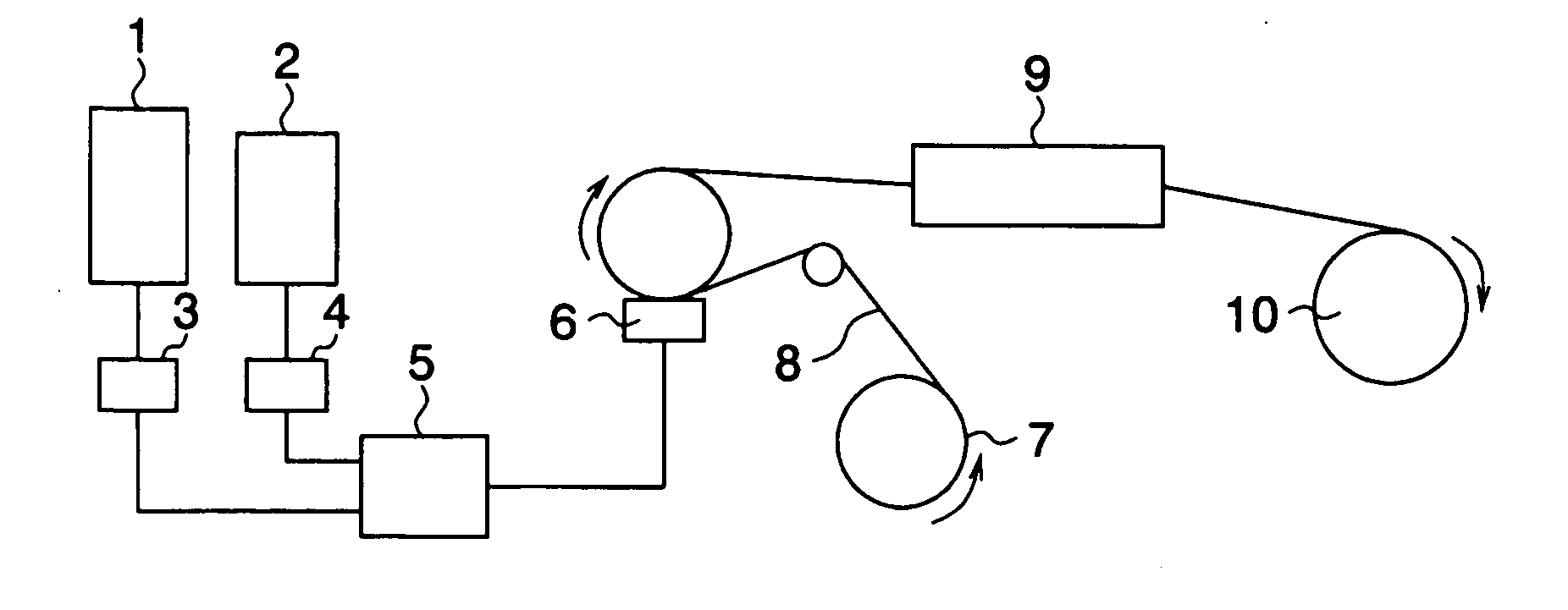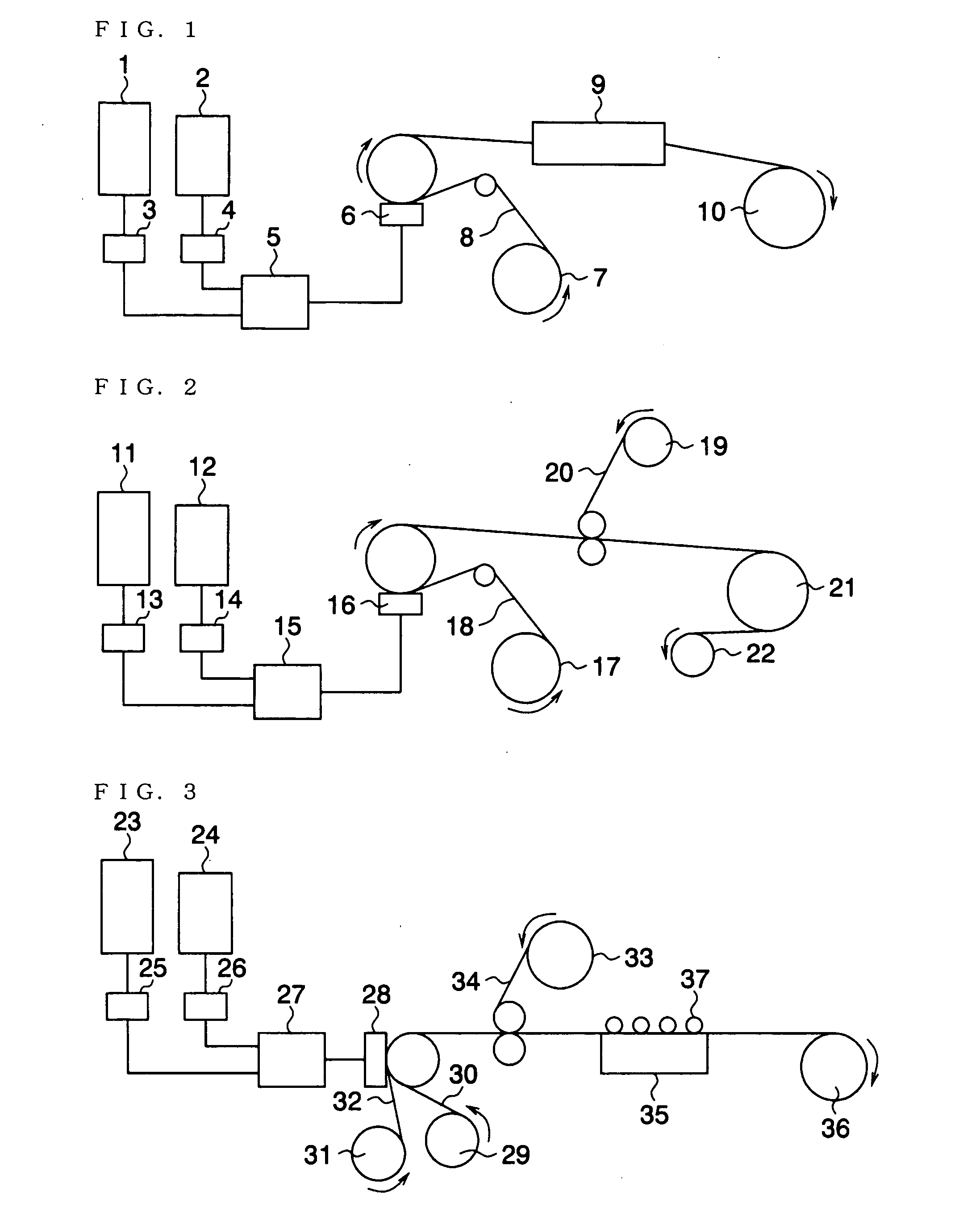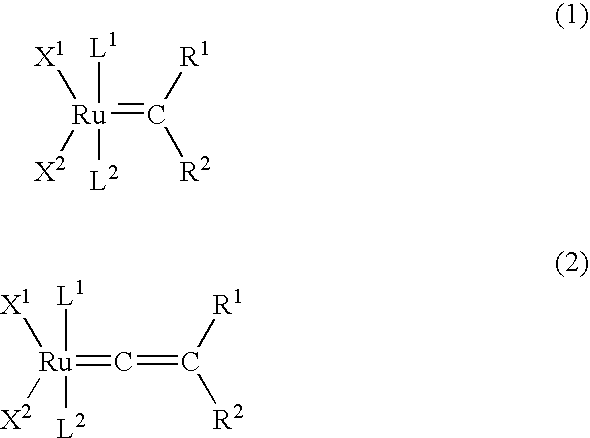Process for producing cycloolefin resin film and process for producing cycloolefin polymer sheet or film
a technology of cycloolefin resin and polymer sheet, which is applied in the direction of thin material processing, transportation and packaging, etc., can solve the problems of poor production efficiency, inconvenient method, and insufficient adhesion strength to other materials such as metallic foils, substrates, etc., and achieve high production efficiency.
- Summary
- Abstract
- Description
- Claims
- Application Information
AI Technical Summary
Benefits of technology
Problems solved by technology
Method used
Image
Examples
examples
[0192] The present invention will be described in more detail by way of examples and comparative examples. However, the following examples should not be construed as limiting the present invention. The types and amounts of the catalyst and cycloolefin monomers can be freely changed without departing from the spirit of the present invention.
[0193] The pot life was determined by mixing 15 ml of the monomer solution and 0.12 ml of the catalyst solution, and measuring the period of time from the start of mixing to the time when the mixture is gelatinized and looses fluidity. A series of operations was carried out in a nitrogen gas atmosphere and the monomer solution and the catalyst solution were mixed at 25° C.
[0194] The glass transition temperature (Tg) of the formed products was measured using a differential scanning calorimeter after heating the sample at the heating rate of 10° C. / min. The heating residue was determined as a residual percentage of weight, which was measured using...
example 1
[0195] A 100 ml glass flask was charged with 1.1 g of benzylidene(1,3-dimesitylimidazolidin-2-ylidene) (tricyclohexylphosphine)ruthenium dichloride and 1.6 g of triphenylphosphine. 44 g of toluene was added to dissolve the mixture thereby obtaining a catalyst solution 1 with a ruthenium concentration of 0.025 mol / l.
[0196] A 1l eggplant flask was charged with 1.8 g of 4-methoxy-2,6-di-t-butylphenol, 450 g of tetracyclo[6.2.1.13,6.02,7]dodeca-4-ene, 150 g of 2-norbornene, 15 ml of allyl methacrylate, and 8.6 ml of di-t-butylperoxide to obtain a monomer solution 1. The pot life was confirmed to be 6 minutes using the monomer solution 1 and catalyst solution 1.
[0197] A glass cloth-reinforced polytetrafluoroethylene resin film (hereinafter referred to as “glass cloth-reinforced PTFE resin film”, thickness: 0.08 mm, Product #5310, manufactured by Saint-Gobain KK) was cut into 150 mm×4100 mm sections. Three sheets of glass cloth, each with a size of 100 mm×4000 mm and a thickness of 0.09...
example 2
[0205] A 100 ml glass flask was charged with 4.1 g of benzylidene bistricyclohexylphosphineruthenium dichloride and 5.2 g of triphenylphosphine. 35 g of toluene was added to dissolve the mixture thereby obtaining a catalyst solution 2 with a ruthenium concentration of 0.10 mol / l (a ruthenium complex catalyst which does not have a hetero atom-containing carbene compound as a ligand). The pot life was confirmed to be 3 minutes and 50 seconds using the monomer solution 1 and catalyst solution 2.
[0206] A prepreg was prepared in the same manner as in Example 1, except for using the catalyst solution 2 instead of the catalyst solution 1. A long prepreg with dimensions of 4000 mm×100 mm was obtained as in Example 1 without interruption.
PUM
| Property | Measurement | Unit |
|---|---|---|
| Temperature | aaaaa | aaaaa |
| Thickness | aaaaa | aaaaa |
| Cooling rate | aaaaa | aaaaa |
Abstract
Description
Claims
Application Information
 Login to View More
Login to View More - R&D
- Intellectual Property
- Life Sciences
- Materials
- Tech Scout
- Unparalleled Data Quality
- Higher Quality Content
- 60% Fewer Hallucinations
Browse by: Latest US Patents, China's latest patents, Technical Efficacy Thesaurus, Application Domain, Technology Topic, Popular Technical Reports.
© 2025 PatSnap. All rights reserved.Legal|Privacy policy|Modern Slavery Act Transparency Statement|Sitemap|About US| Contact US: help@patsnap.com



